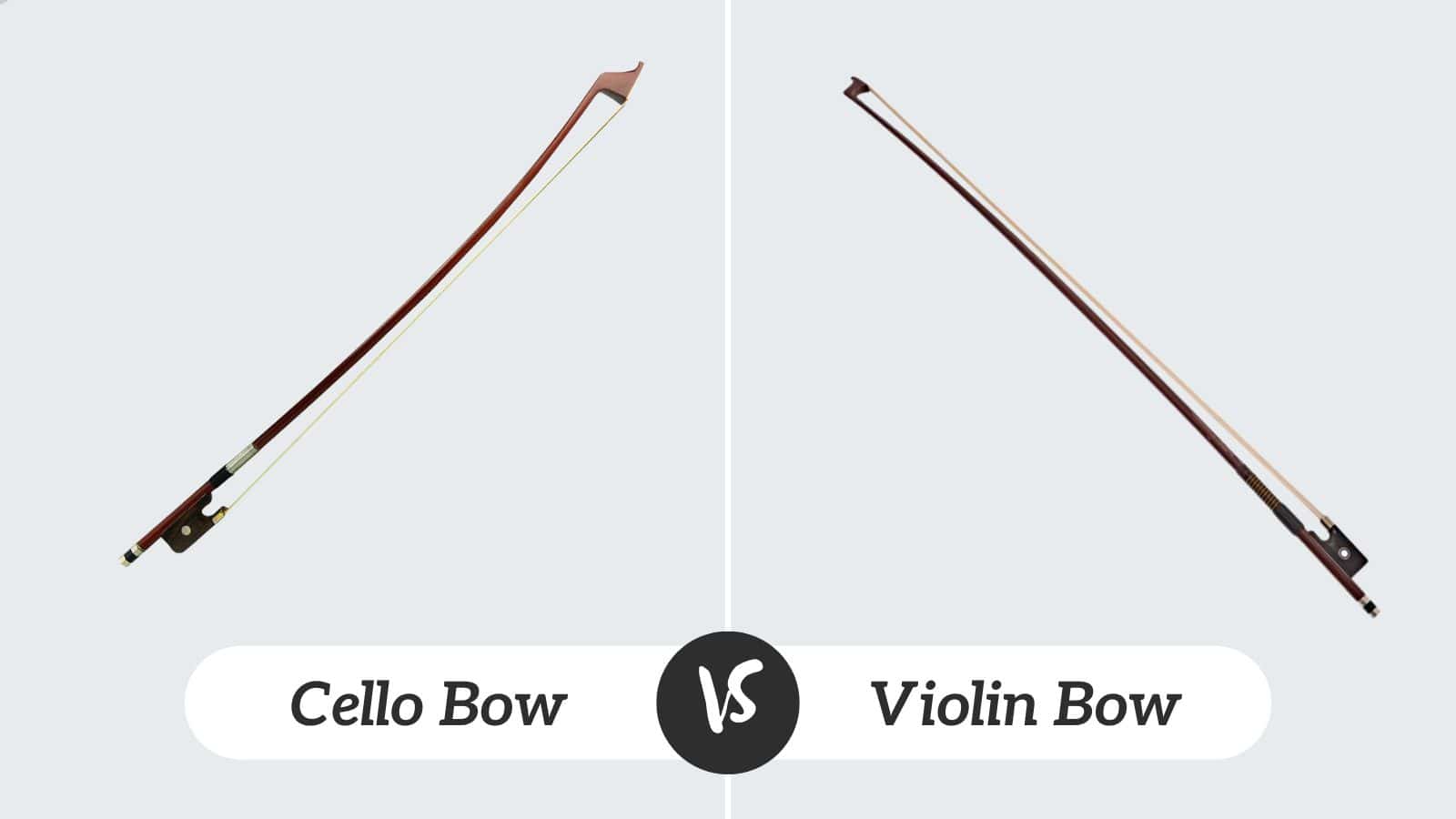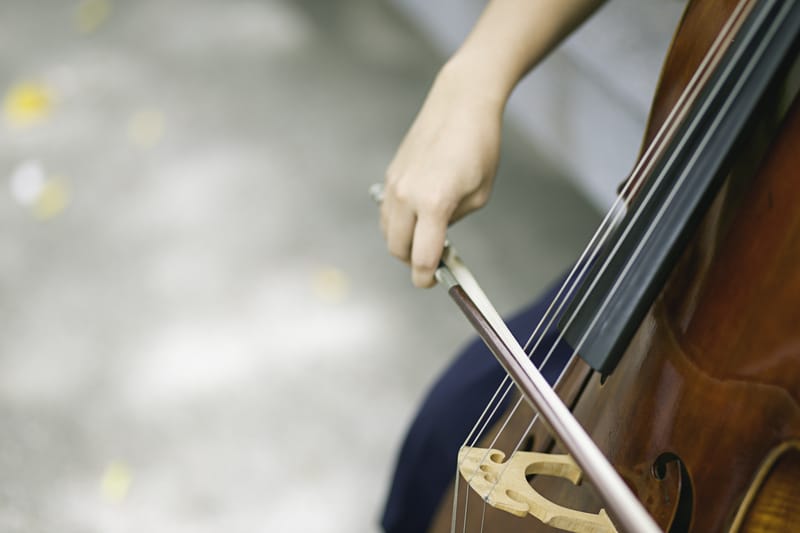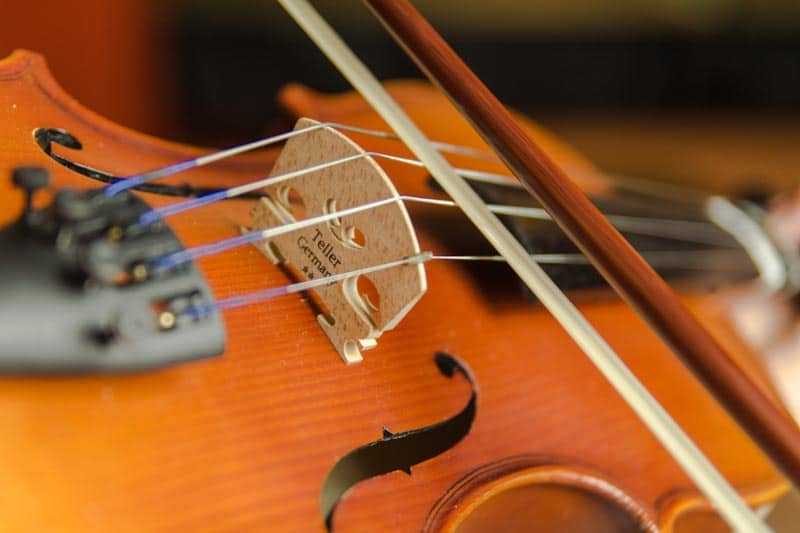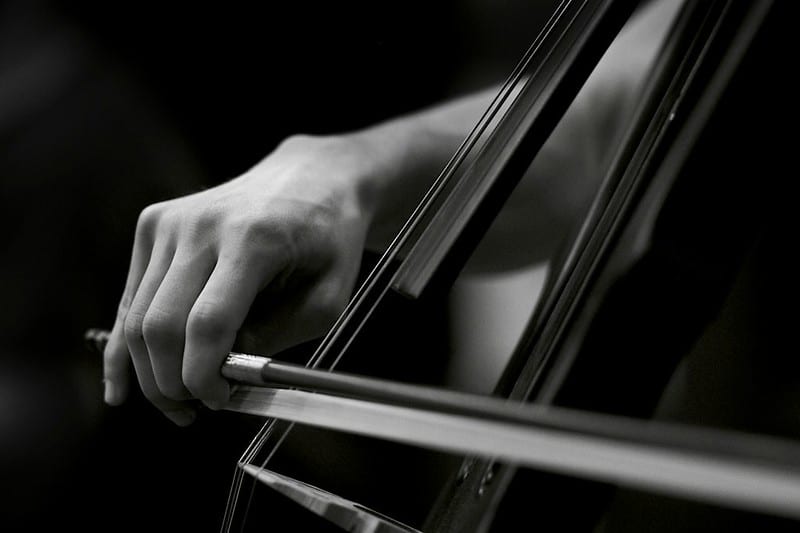
If you’re a string player, you know that the bow is one of the most important tools of the trade. But have you ever wondered what is the difference between a violin bow and a cello bow?
In this blog post, we’ll take a close look at the two types of bows and discuss their similarities and differences. By the end of this post, you’ll know everything there is to know about these essential tools for the string players!
Cello Bow vs Violin Bow
The first difference between these two types of bow is the size. A cello bow is slightly shorter than a violin bow, and there is a good reason for that.
Because it is held horizontally, a shorter bow is less heavy and more easy to control. To give you an idea, the size of a full size violin is about 75cm, and the full size cello bow is about 72cm.
The second difference has to do with the weight. A cello bow is also heavier than a violin bow because again, the cello is a larger instrument.
On average, a violin bow weighs about 60 grams and a cello bow is 80 grams, but keep in mind that this is only an average weight.
The last difference has not to do with the bow itself, but with rosin. Because the cello strings are thicker, they require a stronger “pull”, therefore they need a stronger type of rosin. Violinists prefer a soft type of rosin that can draw a beautiful and soft sound.
To give you a full idea of sizes, we prepared the following charts:
| Violin Bow | Cello Bow | |
|---|---|---|
| Bow Size 1/8 | 52cm | 48cm |
| Bow Size 1/4 | 57cm | 53cm |
| Bow Size 1/2 | 62cm | 60cm |
| Bow Size 3/4 | 68cm | 67cm |
| Bow Size 4/4 | 75cm | 72cm |
| Values are approximate and can vary a little from maker to maker. | ||
What are the unique characteristics of each bow?
When it comes to flexibility, both are optimized for the best playability. Therefore, we can notice a small difference in their shapes as well.
Because cello players need to apply more pressure in order to put the thicker strings into movement, their bows are thicker and heavier. The more curved shape of the cello also makes the process of applying more pressure easier.
This difference in structure affects how each bow vibrates when in contact with the strings, which in turn affects the sound it produces.
The other noticeable difference is the shape of the frog. While cello bows have a round frong, the frog of the violin bows is rectangular. This difference does not have any influence in sound, it is merely for aesthetics.
How do you hold a violin bow?
To hold a violin bow correctly, the hand should form an arch shape with the thumb below, and the other four fingers fingers around the stick.
The bow should be held firmly in place between the thumb and index finger, while the middle and ring fingers brace it from underneath. The tip of the pinky should remain on top of the wood.
How do you hold a cello bow?
The hand position for holding a cello bow is slightly different than that of a violin bow. The fingers of the right hand completely envelop the bow, with the thumb resting under the stick.
Unlike with a violin bow, the tip of pinky does not rest on top of the stick for a legitimate reason: gravity.
Because the cello bow is held horizontally – but with one side facing up – a greater portion of the pinky is necessary to touch the stick keep the bow well balanced.
No matter what type of bow you’re using, make sure to use proper posture and arm position to ensure that your sound is as good as possible. With practice and patience, you can create beautiful music regardless of your instrument.
Pros & Cons of each type of bow
When it comes to the pros and cons of a violin bow compared to a cello bow, there are some key differences that should be noted.
Violin bow
- Pros
Lightweight: the lightweight design makes it easier to play and navigate the strings of a violin;
Easy to maneuver: violin bows are designed so that they can be easily maneuvered around the strings of a violin, allowing for faster and more precise playing.
- Cons
Size: violin bows are longer in length than the violins themselves, requiring the case of the violin to big at least as long as the violin bow;
Being thinner, it can also be more fragile and susceptible to breakage in case of accidents.
Cello Bow
- Pros
It is stronger than a violin bow, less likely to break in case of an accident.
- Cons
More difficult to maneuver due its larger size and weight, especially for beginners.
Both types of bows have their own unique advantages and disadvantages, and the choice of which bow to use is ultimately up to each individual musician. Regardless of the type of bow chosen, practice and dedication are necessary to master the instrument.
With the right amount of hard work and dedication, any musician can make beautiful music with either a violin or a cello bow!
Conclusion
In conclusion, it’s clear that the violin and cello bows have many differences, from size to playability. However, one thing that remains the same is the fact that these bows are essential for producing sound on their respective instruments.
So, if you’re a string player, enjoy your playing and never forget to practice diligently in order to play your favorite melidies!



